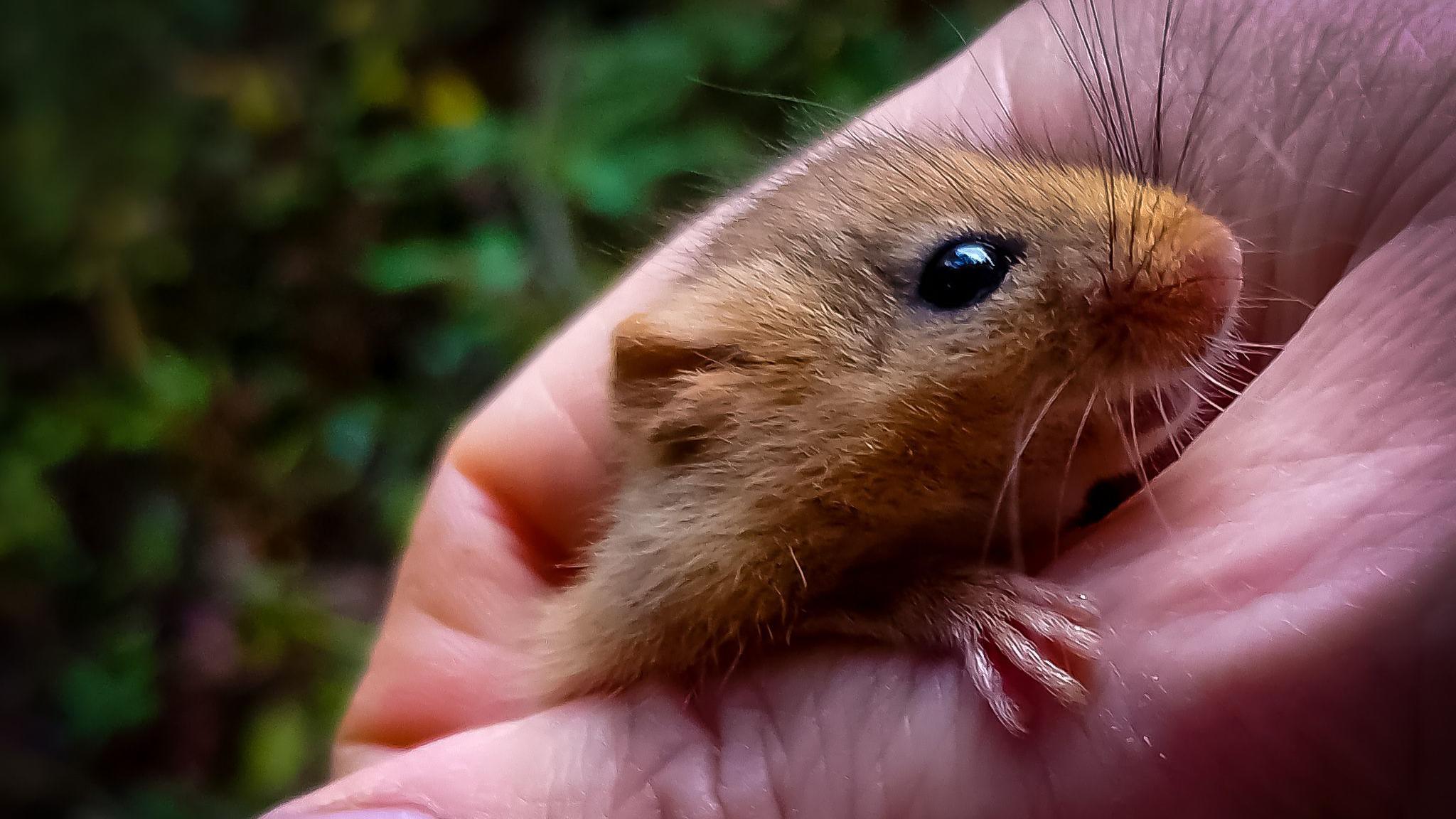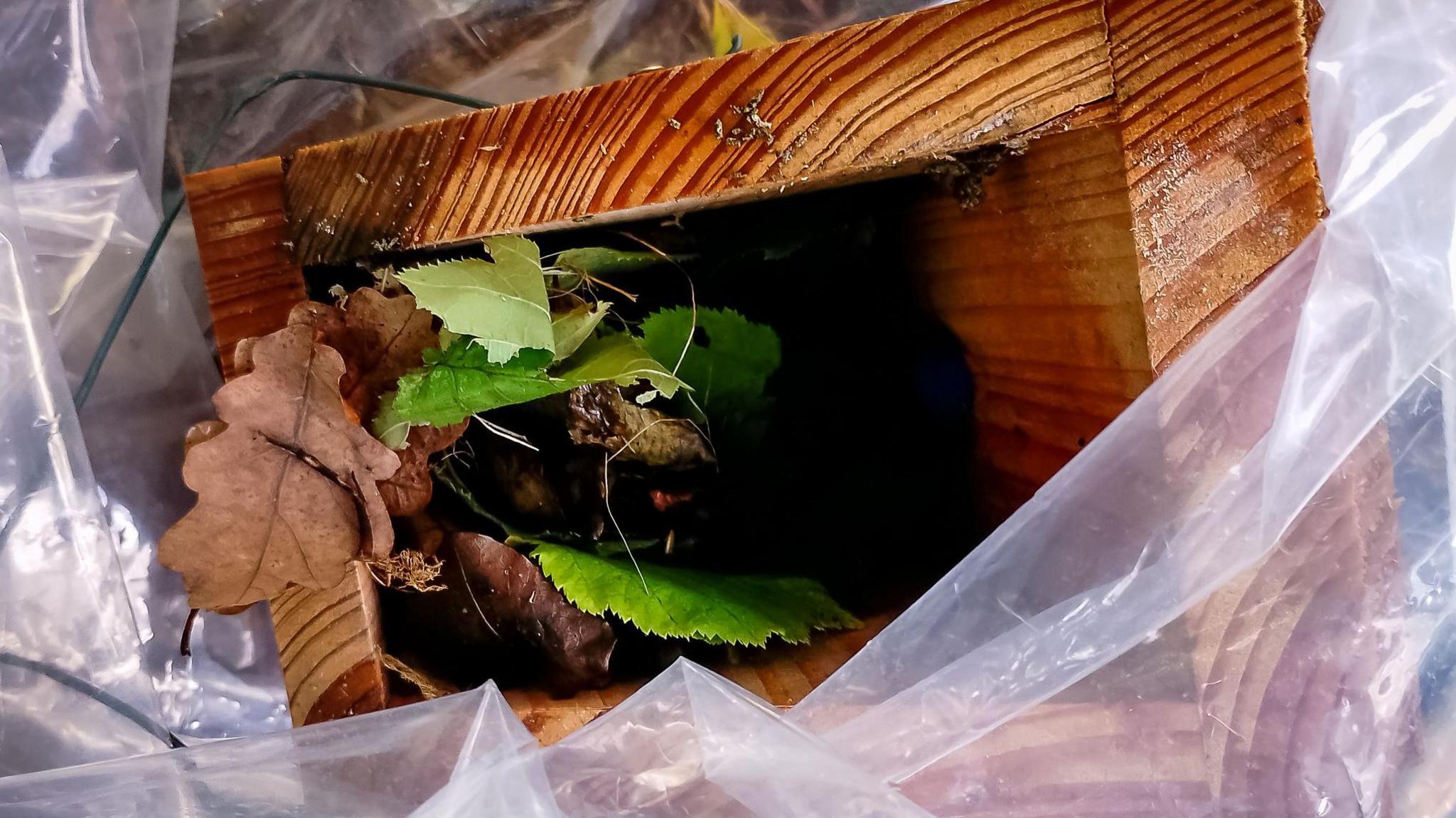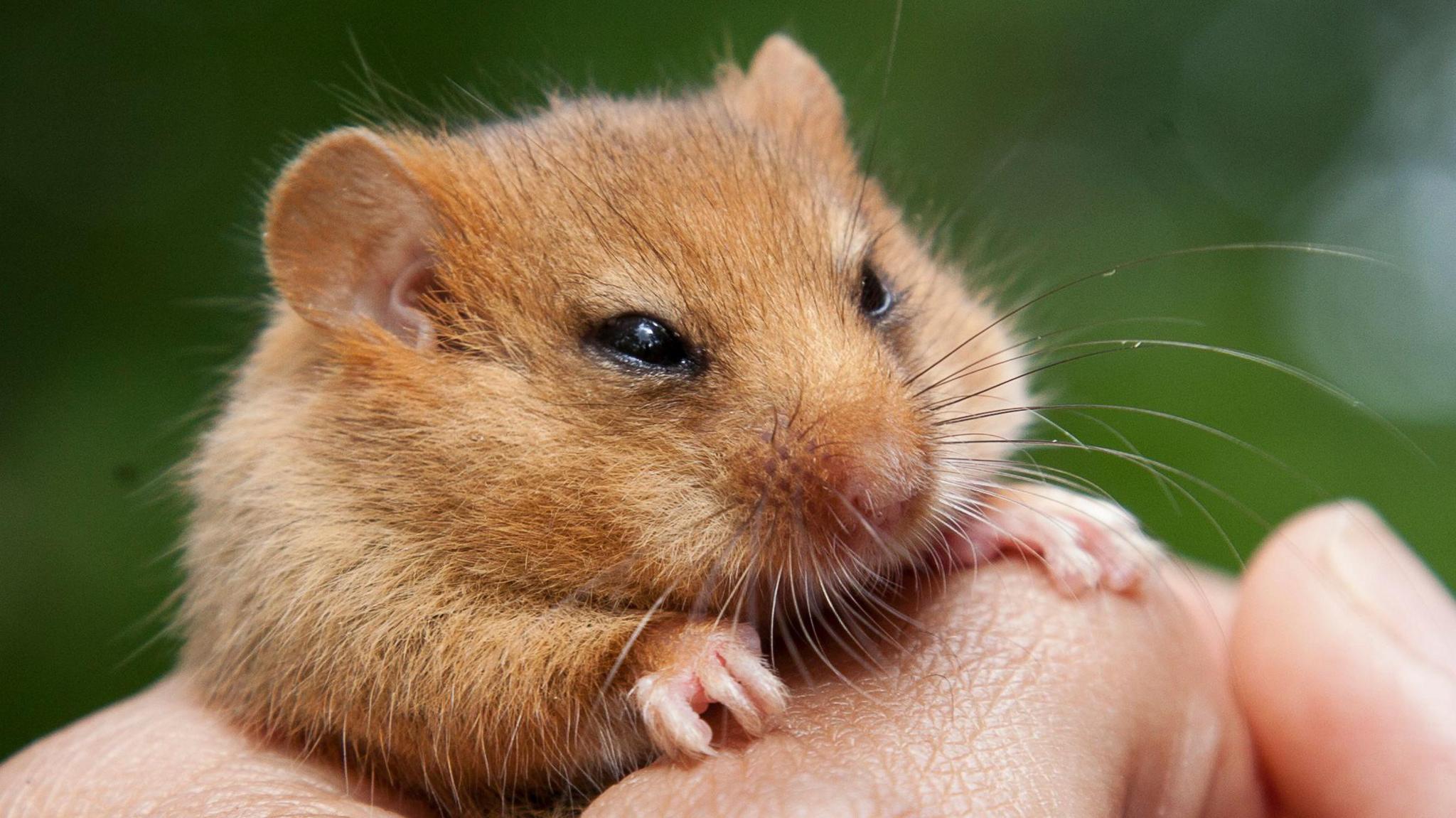New hope for rare rodent after forest find

Researchers found this dormouse in a part of the Pembrokeshire Coast National Park where the threatened mammal has not been recorded before
- Published
A rare hazel dormouse has been found in Pembrokeshire.
The discovery of the mammal in the national park has given conservationists new hope for its recovery there.
The tiny rodent, known for its big eyes, has declined across Britain by 70% since 2000 and is one of seven vulnerable mammals, external in Wales.
Volunteers set out nesting boxes as part of a park conservation scheme and "got lucky" finding the famously sleepy dormouse thriving in a new area.
Dormice release to bolster 'species on the brink'
- Published7 June 2024
Vets help dormice get ready for release into wild
- Published19 May 2024
Hazel dormice need our help, say scientists
- Published16 February 2023
Decades of decline left Pengelli forest, an ancient oak woodland, and another forest near the Pentre Ifan Neolithic site, as the dormouse's last habitat in the park.
"We were looking at linking up those known important sites... and to see if those populations were isolated," said park conservationist Mary Chadwick.
"We have a licensed dormouse volunteer who was happy to take on another site and put out the boxes," she said, adding that it can take years for dormice to use the boxes if the forest they live in already has good nesting spots.
"We got lucky this year."
Dormice were found nesting in Nevern woodland, about five miles (8km) west of Pengelli forest.

Nesting boxes were place in a forest where conservationist hoped to find dormice
"It was wonderful confirmation of what we'd hoped... that there would be dormice throughout the Nevern valley, making them able to spread and connect with other dormice," Ms Chadwick said.
"It gives us hope for the species if it is able to move around the landscape and have the genetic diversity for the species to remain healthy in the long term.
"We are asking farmers and land owners to cut their hedgerows less enthusiastically... maybe on alternate sides every year.
"That would be much better for our dormice."
Related topics
- Published7 June 2024

- Published6 November 2013